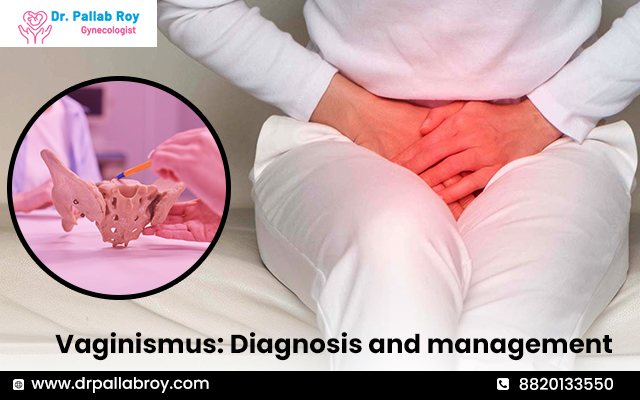Vaginismus refers to a condition characterized by involuntary muscle spasms in the pelvic floor muscles, leading to significant discomfort or pain during attempted vaginal penetration. This can affect individuals of any age and often impacts sexual intercourse, gynaecological exams, or any other form of vaginal penetration. The diagnosis and management of vaginismus involve medical evaluation and interventions to address physical as well as emotional aspects of the condition. Below, a reputed gynaecologist doctor in Behala has discussed the diagnosis and management of this condition.
Diagnosis
The diagnosis of vaginismus typically involves a comprehensive assessment by a doctor, often a gynaecologist. The evaluation includes a detailed discussion of medical history and a physical exam to rule out any underlying medical conditions that can contribute to the symptoms. It is essential to establish a trusting and open dialogue between the patient and doctor to accurately diagnose and address concerns.
Physical Evaluation
During the physical examination, the doctor might assess the pelvic floor muscles for any tension or spasms. They may also check for any physical abnormalities that could contribute to pain or discomfort. However, it is important to note that the physical examination is always conducted with the utmost sensitivity and care to ensure the patient’s comfort and well-being throughout the process.
Management and Treatment
The management of vaginismus may include various strategies. Some of them have been mentioned below.
- Medical Intervention: In some cases, top gynaecologist doctors may recommend medications, such as muscle relaxants or topical numbing agents, to alleviate pain and aid in relaxation during treatment.
- Pelvic Floor Physical Therapy: Working with a specialized gynaecologist can help patients learn relaxation techniques, exercises, and stretches to release muscle tension in the pelvic floor, thereby reducing pain and discomfort during penetration.
- Gradual Desensitization: Gradual exposure to vaginal penetration using dilators or other appropriate tools can help desensitize and retrain the body’s response, gradually allowing for increased comfort and reduced pain during intercourse.
- Education and Counselling: Providing information about vaginismus and its causes can alleviate anxiety and misconceptions. Counselling sessions, either individually or with a partner, can help address psychological factors and establish healthy coping mechanisms.
Conclusion
With proper support and appropriate interventions, individuals experiencing vaginismus can achieve relief, improve their quality of life, and regain control over their sexual health and relationships. Seeking professional help from the best gynaecologist doctor is crucial, and individuals must not feel hesitant to discuss their concerns openly with doctors to receive the necessary guidance.

